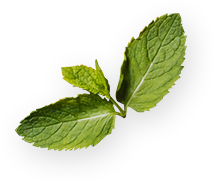
March 12, 2025
Understanding Rheumatoid Arthritis (RA)
What Is RA and How Does It Affect the Body?
Rheumatoid arthritis (RA) is an autoimmune disease that causes chronic inflammation of the joints, leading to pain, stiffness, and swelling. Unlike osteoarthritis, which results from wear and tear, RA occurs when the immune system mistakenly attacks healthy joint tissues.
The Role of Inflammation in RA
Inflammation plays a key role in RA progression. Chronic inflammation damages cartilage and bones, leading to joint deformity and disability if left untreated.
Why Conventional Treatments May Not Be Enough
While medications like NSAIDs, corticosteroids, and biologics help manage symptoms, they often have side effects. This has led many people to seek natural alternatives to complement their treatment plans.
Top Natural Remedies for Rheumatoid Arthritis
Anti-Inflammatory Diet: Best Foods for RA
A diet rich in anti-inflammatory foods can help ease RA symptoms.
- Omega-3 fatty acids (found in salmon, walnuts, and flaxseeds) reduce joint inflammation.
- Antioxidant-rich fruits and vegetables (like berries, spinach, and carrots) protect against oxidative stress.
- Turmeric and ginger contain compounds with natural anti-inflammatory properties.
- Whole grains (such as brown rice and quinoa) are better choices than refined grains, which can trigger inflammation.
- Olive oil provides healthy fats that reduce inflammation.
Exercise for RA: Safe and Effective Workouts
Regular movement helps maintain joint flexibility and strength. Safe exercises for RA include:
- Low-impact aerobics (swimming, cycling, and walking)
- Strength training (light resistance training to maintain muscle support around joints)
- Flexibility exercises (yoga and tai chi)
- Balance exercises (helps prevent falls and joint strain)
The Power of Heat and Cold Therapy
- Cold therapy reduces swelling and numbs sharp pain. Apply ice packs for 15 minutes at a time.
- Heat therapy relaxes muscles and improves circulation. Use warm compresses or soak in a warm bath.
Acupuncture: Does It Really Work for RA?
Acupuncture, an ancient Chinese therapy, involves inserting fine needles into specific points on the body. Studies suggest it may help reduce inflammation and improve pain relief for RA patients.
Massage Therapy: How It Helps Relieve Pain
Therapeutic massage improves circulation, reduces muscle stiffness, and promotes relaxation. Make sure to work with a massage therapist experienced in RA care.
Biofeedback: Controlling Pain Through Mindfulness
Biofeedback uses sensors to help patients understand how stress affects their bodies. Learning to control breathing and muscle tension can lead to pain reduction.
Tai Chi and Yoga for Joint Health
Both tai chi and yoga focus on gentle movements and breath control, improving flexibility, balance, and mental relaxation. Research indicates these practices can help ease joint stiffness and stress.
Natural Supplements for RA Relief
Turmeric and Curcumin: Nature’s Anti-Inflammatory Powerhouse
Curcumin, the active compound in turmeric, has been shown to reduce inflammation as effectively as some anti-inflammatory drugs.
Omega-3 Fatty Acids: Reducing Joint Swelling Naturally
Found in fish oil, omega-3s decrease morning stiffness and reduce RA-related joint pain.
Thunder God Vine: Benefits and Risks
Used in traditional Chinese medicine, thunder god vine has anti-inflammatory properties. However, it can have side effects, including digestive issues and decreased immunity.
Herbal Remedies: Boswellia, Ginger, and More
- Boswellia (Indian frankincense) helps block inflammatory pathways.
- Ginger has similar effects to NSAIDs in reducing joint pain.
- Green tea contains polyphenols that may slow cartilage breakdown.
Holistic Approaches to RA Management
Meditation and Stress Management Techniques
Stress exacerbates RA symptoms. Meditation, deep breathing exercises, and progressive muscle relaxation can help reduce pain and improve overall well-being.
Aromatherapy and Essential Oils for RA
Essential oils such as eucalyptus, peppermint, and lavender can provide pain relief when used in massage or diffusers.
Visualization and Mind-Body Healing
Guided imagery, where you visualize a peaceful scene, can help distract the brain from pain signals and promote relaxation.
Lifestyle Changes for Long-Term Relief
Sleep Optimization for RA Patients
Quality sleep is crucial for managing RA. Try these tips:
- Maintain a consistent sleep schedule.
- Use supportive pillows to reduce joint strain.
- Avoid caffeine and screen time before bed.
Managing Weight to Reduce Joint Stress
Excess weight puts additional pressure on joints, worsening RA symptoms. A healthy diet and exercise routine can help with weight management.
Avoiding RA Triggers: What to Cut from Your Life
- Processed foods high in sugar and unhealthy fats.
- Alcohol and smoking, which increase inflammation.
- Prolonged inactivity, leading to joint stiffness.
FAQs on Natural RA Treatments
1. Can diet alone cure RA?
No, but a well-balanced diet can significantly reduce symptoms and inflammation.
2. How effective are natural treatments compared to medication?
Natural remedies can help manage symptoms, but they should complement, not replace, medical treatments prescribed by a doctor.
3. Are there any risks in using herbal supplements for RA?
Some herbal supplements can interact with medications, so consult a doctor before starting any new supplement.
4. Which lifestyle changes have the biggest impact?
A combination of diet, exercise, stress management, and sleep improvements can lead to noticeable relief.
5. What are the best exercises for RA patients?
Low-impact activities like swimming, walking, yoga, and tai chi are ideal for maintaining joint flexibility and strength.
By integrating these natural remedies into your lifestyle, you can take control of your rheumatoid arthritis and improve your quality of life. Always consult your healthcare provider before making significant changes to your treatment plan.






